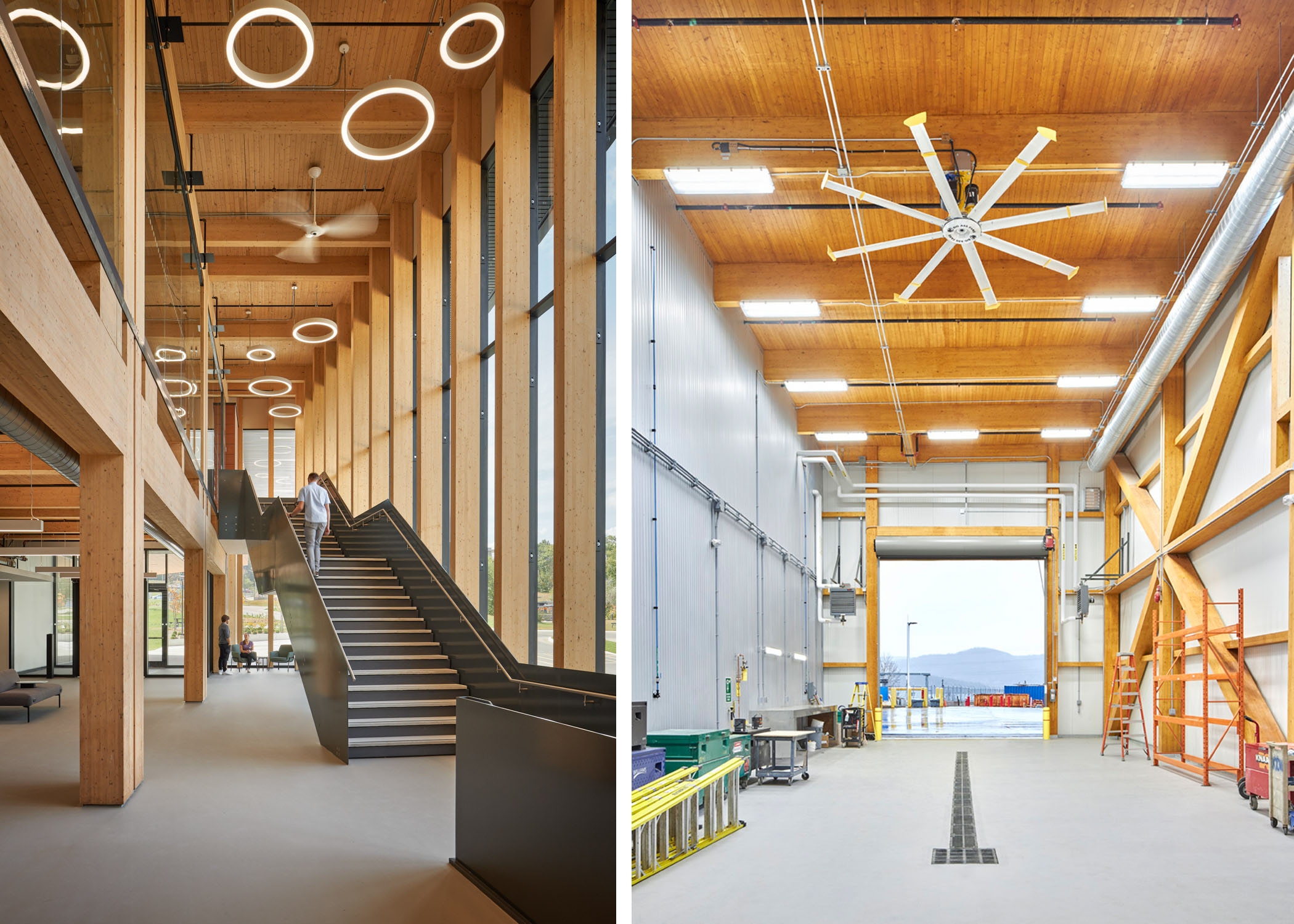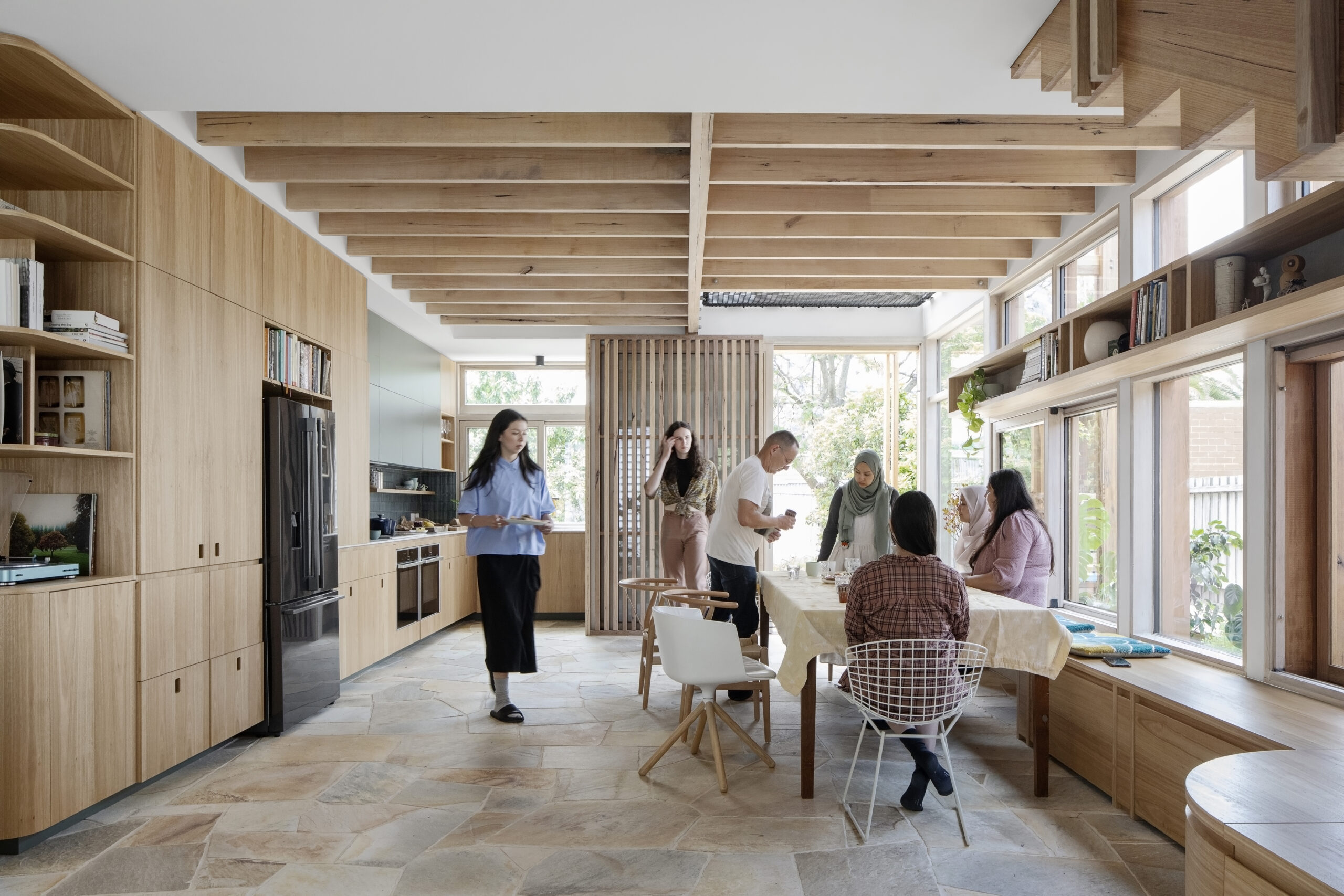Beyond Landmarks: What Makes Architecture Truly Meaningful?
Well-behaved buildings seldom make history. But perhaps they should. The post Beyond Landmarks: What Makes Architecture Truly Meaningful? appeared first on Journal.

Architizer's 13th A+Awards features a suite of sustainability-focused categories that recognizing designers that are building a green industry — and a better future. Start your entry to receive global recognition for your work!
Architecture has always been a mirror of human ambition. History remembers the towering cathedrals, the lavish palaces, the monuments that push boundaries and define entire eras. These are the buildings that last, the ones we preserve, photograph and celebrate.
But for every grand architectural feat, countless other buildings fill our cities; buildings that are not necessarily in the spotlight yet remain essential to our daily lives. These quieter structures don’t compete for attention yet they are just as capable of standing out and making an impact. Perhaps this is where true architectural meaning lies: not in how much a building demands attention but in how it enriches the lives of those who use it.
Everyday buildings can and should be meaningful. A school that fosters learning and socializing, a hospital that promotes healing and well-being, an office that encourages collaboration — all of these are spaces that may not dominate skylines but quietly define our lives. While many architects might not get the chance to design a landmark in the traditional sense, they do hold the responsibility to try and make each space they create meaningful, whether that means creating harmony with a building’s surroundings or ensuring spaces prioritize the well-being of their users.
So, without further ado, let’s take a look at how some architects approach creating meaningful spaces and the results they bring to life.
Human-Centric Design: Creating Spaces That Serve People

Mayo Clinic’s Anna-Maria and Stephen Kellen Building by HDR, Rochester, Minnesota

The Pavilion at the Hospital of the University of Pennsylvania by HDR, Philadelphia, Pennsylvania
Meaning in architecture often starts with a focus on people — what architects today like to call “human-centric design.” This might sound like a buzzword, but it’s actually part of a really fascinating shift happening in the industry, especially after the COVID-19 pandemic redefined so many of our ideas around public and private spaces. Think about it: suddenly, spaces where we lived, worked, learned or even recovered took on this whole new importance. The emphasis shifted toward making these spaces not just functional but nurturing and actually meaningful for the people who use them.
So, what is “human-centric design,” exactly? At its core, it’s about prioritizing the needs, comfort and overall well-being of the people who use a space. This means more than just checking off boxes for functionality; it means creating environments where people feel genuinely cared for and supported. It’s a concept that’s grown alongside our evolving understanding of how physical spaces influence mood, productivity and even recovery in healthcare settings.
Knowing this, it’s clear that human-centric design isn’t just a trend but a genuine commitment to creating spaces that positively impact people’s lives. For architects, it’s a powerful way to ensure their work leaves a lasting, meaningful impression on those who experience it.

CNL New Builds by HDR, Chalk River, Canada | Popular Choice Winner, Architecture +Wood, 12th Annual A+Awards
At Future Fest 2024, this philosophy was particularly emphasized by HDR, a global design firm known for its people-focused approach in fields like healthcare, education and research. HDR shared how they see each project as an opportunity to make a tangible difference.
One standout example of their human-centric work is the Canadian Nuclear Laboratories (CNL) campus at Chalk River. This project showcases that architecture can be both technologically forward while remaining deeply human-centric. Set against the natural beauty of Ontario’s Ottawa River Valley, the CNL campus respects the environment and cultural history of its location. Using locally sourced mass timber, the campus combines durability with a warm, inviting atmosphere that speaks to the area’s lumber and Indigenous heritage.
See HDR’s Full Future Fest Talk

CNL New Builds by HDR, Chalk River, Canada
Beyond sustainability and reducing the building’s carbon footprint, the choice of timber also creates a warmth and connection to the surrounding landscape that concrete and steel just wouldn’t achieve. It’s a nod to the area’s culture and history, making the space feel like it belongs there. So, rather than feeling like a clinical lab, it feels grounded and almost inviting — something you don’t often associate with a research campus.
Inside, the spaces prioritize natural light and open layouts, making them feel uplifting rather than claustrophobic. Communal areas encourage interaction and collaboration, which fosters a real sense of community among researchers and staff. It’s a campus that values not only environmental sustainability but also the well-being and daily experience of its users.
Embedding Eco-Responsibility for a Lasting Impact

Marina Tower, Ellinikon by Foster + Partners, Athens, Greece
If creating a lasting impact is what makes architecture meaningful, then architecture must strive to be timeless. This isn’t just about appearances — it’s about designing spaces that can endure, adapt and respect the natural world. Meaningful architecture considers the needs of people today and anticipates those of future generations, finding ways to remain relevant without placing unnecessary demands on the planet. Knowing this, it’s not a surprise that at the heart of this approach lies sustainability.
Designing meaningfully is, by necessity, designing responsibly. It includes thoughtfully choosing materials, energy systems and building strategies that allow a structure to function well within its environment. When eco-responsibility is at the forefront, buildings acquire a lasting quality, requiring fewer alterations over time and settling naturally into their surroundings. This shift is gaining traction as architects consider their broader contributions to both communities and ecosystems.

Marina Tower, Ellinikon by Foster + Partners, Athens, Greece
It’s promising to see leading firms like Foster + Partners adopting this philosophy in their projects. In his Future Fest presentation, Nicola Scaranaro, Partner at Foster + Partners, discussed the firm’s urban architecture approach, highlighting how they integrate sustainability to create lasting impact. Foster + Partners’ recent projects, including the Marina Tower in Athens and the MOL Campus in Budapest, are prime examples of how eco-responsibility can anchor meaningful design.
Marina Tower is envisioned as Greece’s first “green” high-rise, incorporating features designed to harmonize with Athens’ climate and coastal environment. Foster + Partners designed the tower with natural airflow, daylight and shading elements that reduce the need for artificial cooling or heating, allowing the structure to stay comfortable while keeping energy demands low. By integrating a unique, climate-responsive façade, the building “breathes” with the surrounding air and light, a choice that exemplifies how sustainable design can reduce environmental impact over the long term.

MOL Headquarters by Foster + Partners, Budapest, Hungary
Meanwhile, the MOL Campus in Budapest—a corporate headquarters and one of the city’s tallest buildings—highlights the firm’s commitment to eco-responsibility in a bustling urban setting. The building features geothermal energy systems, native vegetation and passive cooling strategies, establishing a workspace that engages with the local environment rather than working against it. Foster + Partners designed the campus to foster energy efficiency and adaptability, ensuring the building will remain functional as climate conditions evolve.
See Foster + Partners’ Full Future Fest Talk
Designing with Cultural Continuity in Mind
If architecture is to be meaningful, it must consider the cultural identity of the communities it serves. Cultural continuity in architecture is about preserving and evolving the historical and social narratives that define a place, all while adapting to meet contemporary needs. When architecture respects and builds upon these foundations, it connects people to their heritage, fostering a sense of identity and belonging within the built environment. This approach creates spaces that are not only functional but deeply resonant, bridging the past with the present to enrich daily life.

Exeter College Cohen Quad by Alison Brooks Architects, Oxford, United Kingdom
This philosophy perfectly reflects the work of Alison Brooks Architects, who draw upon the heritage and essence of each site to create spaces that resonate with both history and community. Alison Brooks, speaking at Future Fest, described her practice as one that carefully respects and enriches civic identity. For Brooks, meaningful design emerges from a deep understanding of place — an architecture that brings continuity to modern design by recognizing the unique narratives embedded in each location.
A quite vivid example of this approach is the Cohen Quad at Exeter College, Oxford. The project reinterprets the traditional Oxford collegiate quadrangle, a form central to Oxford’s identity, by reshaping it to reflect modern academic and social needs. Instead of a conventional closed quadrangle, Brooks introduced an S-shaped layout that transforms the quad into a journey between two landscaped courtyards. This gentle curve honors the historical typology while adding a fresh perspective, creating spaces that invite exploration and interaction. Continuous pathways, cloisters and gardens weave through the design, reflecting Oxford’s long-standing ideals of community and academic exchange.

Exeter College Cohen Quad by Alison Brooks Architects, Oxford, United Kingdom
By integrating historical forms with new functions, Cohen Quad allows students and faculty to engage with the space in ways that echo Oxford’s enduring academic traditions while meeting today’s educational demands. In this way, Brooks’s design not only preserves but actively strengthens the spirit of Oxford, making it meaningful for generations to come.
See Alison Brooks’ Full Future Fest Talk
Finding Meaning In Every Building
Ultimately, meaningful architecture doesn’t just happen on the grand scale of historic landmarks or groundbreaking projects. It’s something that can (and should!) be woven into every space, from community centers to classrooms to the very offices where people spend their days. When architects take the time to consider the needs, histories and futures of the people and places they serve, they create buildings that are more than structures—but rather integral parts of daily life. And in the end, it’s this dedication to purpose and people that ensures architecture has a lasting, positive impact, no matter the project’s size or scale.
Architizer's 13th A+Awards features a suite of sustainability-focused categories that recognizing designers that are building a green industry — and a better future. Start your entry to receive global recognition for your work!
The post Beyond Landmarks: What Makes Architecture Truly Meaningful? appeared first on Journal.
What's Your Reaction?


















































